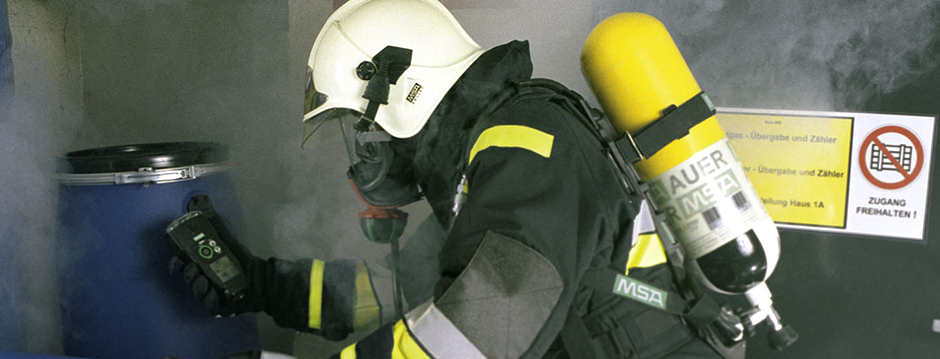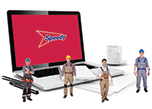
One of the most dangerous aspects involved in working in construction, building and manufacturing are issues related to breathing in dangerous substances and materials.
Unfortunately, there is a chance that you could breathe in materials which could cause damage either in the short or long term.
Dust, fumes and other particles can all cause health problems for workers and it is essential that employers provide respiratory personal protective equipment (RPE) in order to safeguard their workforce.
However, it's not just a case of buying masks and other forms of equipment and leaving workers to it; firms need to take the lead and ensure they are doing all they can to protect people.
What is RPE?
Respiratory Protective Equipment (RPE) is a form of Personal Protective Equipment (PPE), worn to protect the user from the inhalation of hazardous airborne substances in the work environment.
RPE should always be used as a hierarchy of control measures, such as elimination, substitution, and control. Under the law, RPE is the last line of defence against hazardous product control.
There are two forms of RPE: Respirators and Breathing Apparatus.
Respirators are filtering devices which remove particles from the air being breathed in. They can either be powered or non-powered, the former using a motor to work or the latter relying on the person breathing to work the respirator.
Breathing apparatus uses a supply of clean air from an independent source, such as an air cylinder.
There are two main groups of respirators and breathing apparatus:
- tight fitting facepieces (such as masks) will require fit testing to ensure a secure, sealed fit to the face
- loose fitting face pieces can include hoods, helmets, all-in-one suits or visors but need a form of breathing apparatus to ensure clean air is flowing inside
Tight-fitting facepieces are always the first choice in most situations. Loose-fitting face pieces are available for anyone who can't wear tight masks, for medical reasons or because of facial hair.
What Do Employers Need to Know About RPE?
The first thing that bosses need to be aware of is what processes within a work operation are the most dangerous and require workers to wear RPE.
Three examples of these sorts of tasks are highlighted by the Health and Safety Executive (HSE), with these being:
- cutting a material such as stone, concrete or wood
- using a volatile liquid
- handling a dusty powder
All of these have the potential to cause health problems for workers but RPE can keep these pollutants out of the face and minimise the risk.
The HSE continues: "Workers may also need to work in areas where oxygen levels are low, for example, confined spaces, such as a chamber or tank. RPE is designed to protect the wearer from these hazards."
Other circumstances where RPE is appropriate include providing such equipment for a safe exit in an emergency scenario and also when it is needed, should there be a temporary failure of controls.
The HSE advises that RPE needs to be right for the wearer, the task, and the environment, so prior research into models, styles and types is essential.
From then it's all about ensuring there is a good fit, adequate maintenance instructions and finally keeping it stored in a safe place.
Why is RPE important?
Respiratory illnesses are often chronic. Health issues may not become apparent until years after exposure to harmful substances, by which time it is too late to act.
Some of these issues can prove fatal. Occupational respiratory diseases can kill tens of thousands of people every year.
So while RPE should be the final line of defence in the workplace, it can be the only solution in some cases. Therefore, its suitability and quality is imperitive.
- 2024
- 2023
- December 2023 (13)
- November 2023 (9)
- October 2023 (7)
- September 2023 (10)
- August 2023 (20)
- July 2023 (21)
- June 2023 (17)
- May 2023 (17)
- April 2023 (17)
- March 2023 (14)
- February 2023 (15)
- January 2023 (7)
- 2022
- December 2022 (6)
- November 2022 (12)
- October 2022 (24)
- September 2022 (14)
- August 2022 (12)
- July 2022 (15)
- June 2022 (18)
- May 2022 (14)
- April 2022 (9)
- March 2022 (5)
- February 2022 (5)
- January 2022 (2)
- 2021
- December 2021 (7)
- November 2021 (10)
- October 2021 (1)
- September 2021 (1)
- August 2021 (3)
- July 2021 (3)
- June 2021 (4)
- May 2021 (1)
- April 2021 (1)
- March 2021 (2)
- February 2021 (1)
- January 2021 (1)
- 2020
- 2019
- 2017
- 2016
- 2014
- 2013
- 2012
- 2011


